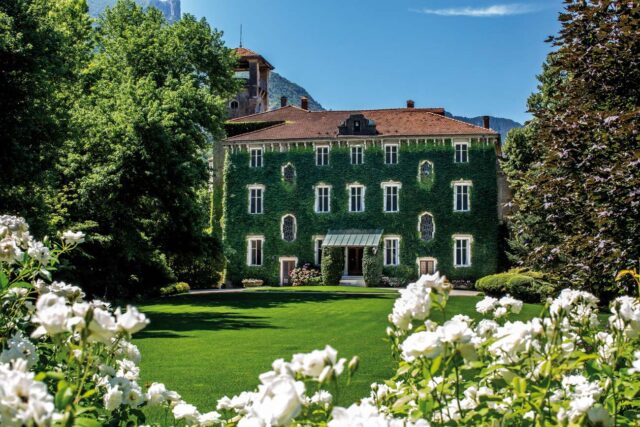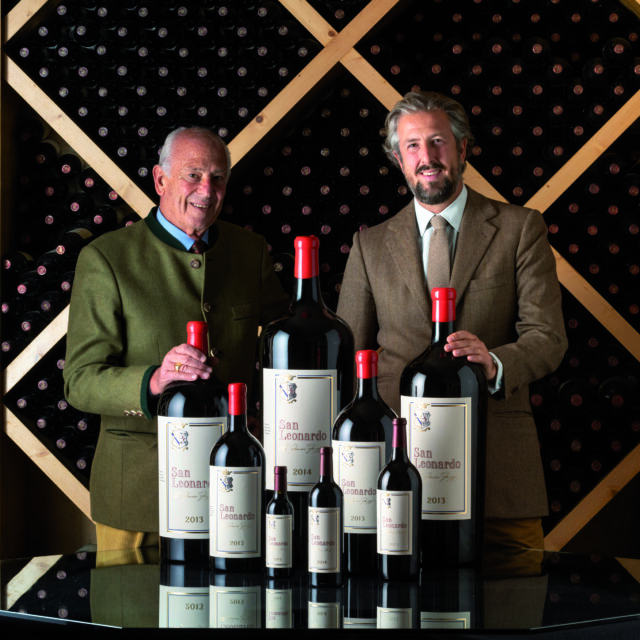This website uses cookies so that we can provide you with the best user experience possible. Cookie information is stored in your browser and performs functions such as recognising you when you return to our website and helping our team to understand which sections of the website you find most interesting and useful.
In focus: How the pandemic has affected fine wine’s middle tier
With both luxury labels and entry-level brands posting strong off-trade sales in the past year, James Lawrence explores how the pandemic has affected fine wine’s middle tier.

In October 2020, Swiss bank UBS released a report that tracked the status of the world’s billionaires. It showed that the wealthy had seen their fortunes climb 27.5% to $10.2trn between April to July last year. Fine wine, like the world’s super-rich, has triumphed during the pandemic.
“Although the on-trade market has dried up, we have seen an uplift in private clients buying luxury labels that more than makes up for this,” reports Jeroboams wine director, Peter Mitchell MW.
Many of the UK’s leading merchants and brokers echo these sentiments. “Broadly, the last six months have seen a rise in buying from both wine collectors and investors in the high net worth space we focus on. Buying interest more recently (the last three months) has been most concentrated on Bordeaux and – to a lesser extent – Burgundy,” adds Matthew O’Connell, head of investment at Bordeaux Index.

But what about the squeezed middle? The hardest sales pitch has historically been the middle child: upmarket labels priced at between £30-£60, which lack the instant cachet of the most famous names. Are consumers even less interested than before? Here, the waters turn murky.
Prior to 2020, the premiumisation narrative was firmly ingrained into the day-to-day rhetoric of the trade – particularly in the restaurant sector. However, it seemed logical that rising uncertainty/unemployment would push a critical mass of consumers towards cheaper brands, and stifle consumer willingness to jump up from entry-level to premium/super-premium.
This was the IWSR’s prediction. “Consumers will gravitate towards value products, the wealthy will still treat themselves, and middle-priced brands will represent the squeezed middle,” said IWSR, CEO Mark Meek. Anecdotal evidence from certain UK merchants and European retailers validates Meek’s forecasting, made in March last year.
“It is fair to say that the least impact across the last 6-9 months has been on this ‘middle’ segment, £30-60 type area, with ‘drinking’ wine seeing significantly increased volumes and blue chip brands having quite frenzied activity at times, but this segment having less of a change,” says O’Connell.
Clemens Riedl, owner of a leading wine distributor in Austria, told db that “we’ve seen an increase in the low end of the market mainly sold via supermarkets, as people could not drink in bars in Austria anymore.”
Riedl added: “The luxury market is doing well too – our sweet spot – mainly because the target audience has more time to focus on buying wine and less disposable income is being spent in the hospitality sector. The market in the middle struggled the most, as the middle classes became more prudent in their spending habits.”
But there isn’t a binding consensus on this issue. “We have an affluent customer base whose everyday wine used to be £15-20 and is now £25-£30. We did pick up a few pallet parcels of entry-level wines from on trade suppliers with excess stock during the first lock down, but it wasn’t really worth doing,” says Museum Wine’s owner, Daniel Grigg.
“If you’d told me five years ago that today I’d be selling cases of £50 Chardonnay from Stellenbosch, I’d have wanted to know what you were smoking and where you got it. Yet we’ve seen a steady rise in interest in South African wines at that price point, especially Chardonnay and Pinot Noir as £50 Burgundy continues to offer less and less for that price tag. During lockdown that steady rise became a stratospheric ascent in terms of demand.”
Trentino estate San Leonardo is a pertinent example of this difficult to characterise, ‘middle’ wine brand. Typically priced at under £65, it sits awkwardly between fine wine and super-premium status. Its wines are critically lauded, although they lack the renown of Tuscany’s Sassicaia and Tignanello. And yet the estate managed to expand its share of the value market over the past six months.

“We had a very small decrease in sales, but margins are better when compared to the previous year,” explains owner Anselmo Guerrieri Gonzaga. “The UK market has performed incredibly well for us.”
Several major fine wine producers, such as Ornellaia, told db that the pandemic had led to “a surge of interest in our second labels.” Brands like Le Serre Nuove Dell’ Ornellaia, which costs less than half of the grand vin – typically between £50-60 in retail. This suggests that there is an expanding market for more affordable styles. The “squeezed middle,” in other words.
“The rise of second labels is for sure a trend, both in Europe and outside of Europe,” says Francesco Ricasoli, owner of Ricasoli 1141.
“Our Gran Selezione, the top wines of our range, are the ones that are struggling the most at the moment. In the off-premise, online and offline, in wine shops and large-scale retail trade, our second wines like Brolio Chianti Classico and Chianti Classico Riserva are doing well, as well as our new IGT Feudo della Trappola.”
However, this phenomenon is not limited to Italy. According to Liv-ex, buyers have also been seeking greater value from Burgundy during the pandemic. “While the release of the relatively abundant Burgundy 2018 vintage was met with steady demand, there was a discernible shift in secondary market buying patterns,” explains Liv-ex director and co-founder Justin Gibbs.
“Demand shifted from Burgundy’s trophy assets to more affordable second and third tier growers. This was reflected in a loss of market share by value, while overall volumes traded held steady.
“The Burgundy 150 index was one of only two sub indices to be in negative territory in 2020 – down 1.52%. While the Rest of the World category gained market share through 2020, buyers were seeking out value at the lower tiers,” Gibbs said.
It seems reasonable to conclude that the belt-tightening being experienced by some professionals – especially younger consumers and hospitality workers – hasn’t engendered that much enthusiasm for up-spending on premium plonk in the multiples.
Yet wealthier and older – if not exactly millionaire – buyers appear to be in the mood for second wines, and are trading down from the gilded spires of luxury to super-premium, while the awkward middle child is enjoying something of a Renaissance. The question is – how long will it last.

